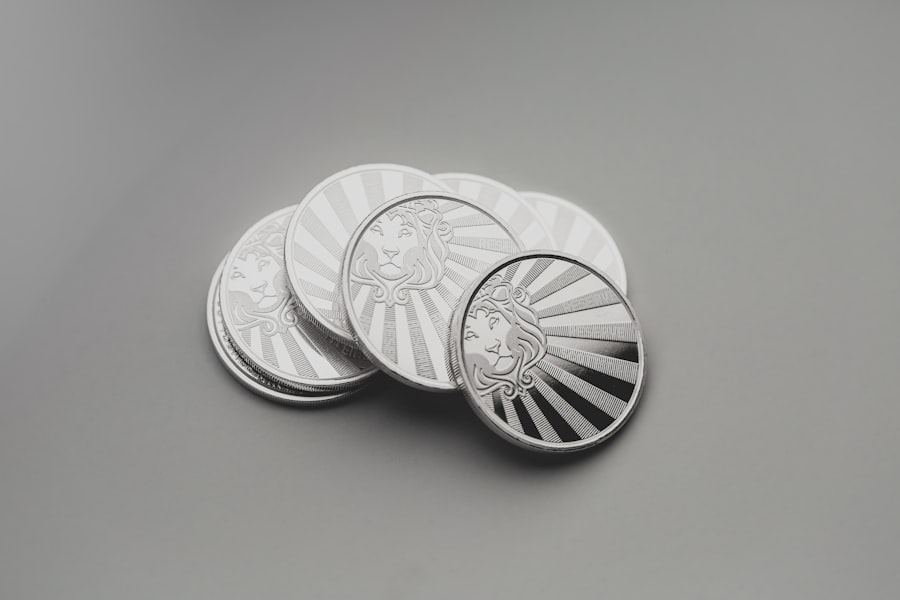Silver quail breeding is a fascinating and rewarding endeavor for many poultry enthusiasts. These small, attractive birds are known for their gentle nature and prolific egg-laying capabilities, making them a popular choice for backyard breeders and commercial operations alike. Silver quail, also known as Coturnix coturnix, are relatively easy to care for and breed, making them an ideal choice for beginners and experienced breeders alike.
Breeding silver quail can be a profitable venture, as these birds are in high demand for their meat and eggs. Additionally, their small size and low maintenance requirements make them an attractive option for those with limited space or resources. Whether you are interested in breeding silver quail for personal enjoyment or as a business venture, understanding the ins and outs of their breeding behavior, care, and nutrition is essential for success.
Table of Contents
Key Takeaways
- Silver quail breeding is a rewarding hobby that requires careful selection of breeding stock and understanding of breeding behavior and cycles.
- When selecting breeding stock, look for healthy, active birds with good conformation and desirable traits such as color and size.
- Understanding breeding behavior and cycles is crucial for successful breeding, including recognizing signs of mating, egg laying, and incubation.
- Creating the ideal breeding environment involves providing adequate space, nesting materials, and a balanced diet to support breeding and egg production.
- Caring for quail chicks requires attention to temperature, humidity, and nutrition to ensure their healthy growth and development.
- Health and nutrition considerations are important for maintaining the overall well-being of the breeding stock and their offspring.
- Troubleshooting common breeding issues such as low fertility, egg binding, and chick mortality requires careful observation and proactive management.
Selecting the Right Breeding Stock
Selecting the right breeding stock is crucial for successful silver quail breeding. When choosing breeding birds, it is important to select healthy, vigorous individuals with desirable traits such as good conformation, strong egg-laying abilities, and gentle temperament. Look for birds that are active, alert, and free from any signs of illness or deformities. It is also important to consider the genetic diversity of your breeding stock to avoid inbreeding and maintain the overall health and vigor of your quail flock.
When selecting breeding stock, pay attention to the coloration and markings of the birds if you are breeding for specific color variations. Silver quail come in a variety of colors, including silver, brown, and white, so choose birds that exhibit the coloration you desire in your breeding program. Additionally, consider the age of the birds when selecting breeding stock. Younger birds are generally more fertile and productive, so it is advisable to choose birds that are between 6-8 weeks old for breeding purposes.
Understanding Breeding Behavior and Cycles
Understanding the breeding behavior and cycles of silver quail is essential for successful breeding. Silver quail are known for their prolific egg-laying capabilities, with hens typically laying one egg per day. The breeding season for silver quail typically begins in the spring and continues through the summer months, although they can be bred year-round in a controlled environment.
During the breeding season, male quail will often display courtship behavior such as strutting, calling, and puffing up their feathers to attract females. It is important to provide a balanced ratio of males to females in your breeding flock to ensure successful mating and egg production. A general rule of thumb is to have one male for every three to five females to prevent over-mating and aggression among the males.
Once mating has occurred, female quail will begin laying eggs within a few days. It is important to provide suitable nesting boxes or areas for the hens to lay their eggs to prevent them from becoming damaged or eaten by other birds. Silver quail eggs typically take 16-18 days to hatch, so it is important to monitor the nesting boxes regularly and remove any eggs that have not hatched after this time period.
Creating the Ideal Breeding Environment
Creating the ideal breeding environment is essential for successful silver quail breeding. Providing a clean, spacious living area with plenty of natural light and ventilation is crucial for the health and well-being of your breeding stock. It is important to provide separate living quarters for your breeding birds to prevent overcrowding and reduce the risk of aggression and stress.
When setting up the breeding environment, consider providing suitable nesting boxes or areas for the hens to lay their eggs. Nesting boxes should be filled with clean, dry bedding material such as straw or wood shavings to provide a comfortable and secure environment for the hens to lay their eggs. Additionally, it is important to provide a balanced diet rich in protein and essential nutrients to support the health and reproductive capabilities of your breeding stock.
Maintaining a consistent temperature and humidity level in the breeding environment is also crucial for successful silver quail breeding. Silver quail thrive in temperatures between 60-75 degrees Fahrenheit and require a humidity level of around 60% during the incubation period. It is important to monitor these environmental factors regularly and make any necessary adjustments to ensure optimal breeding conditions for your quail flock.
Caring for Quail Chicks
Caring for quail chicks requires special attention and care to ensure their health and well-being. Quail chicks are delicate and vulnerable during the first few weeks of life, so it is important to provide a warm, clean environment with access to fresh water and high-quality chick starter feed. It is essential to monitor the temperature of the brooder box regularly and make any necessary adjustments to maintain a consistent temperature of around 95 degrees Fahrenheit during the first week of life, gradually decreasing by 5 degrees each week until reaching room temperature.
In addition to providing a suitable brooder environment, it is important to handle quail chicks gently and minimize stress to promote healthy growth and development. Avoid overcrowding in the brooder box and provide plenty of space for the chicks to move around freely. It is also important to monitor the chicks for any signs of illness or deformities and provide prompt veterinary care if needed.
As quail chicks grow, it is important to gradually introduce them to their outdoor living environment to acclimate them to natural light, fresh air, and different types of feed. Providing access to a spacious outdoor pen with plenty of room to roam and explore will help promote healthy development and socialization among the chicks. Additionally, it is important to provide suitable shelter and protection from predators to ensure the safety and well-being of your growing quail flock.
Health and Nutrition Considerations

Maintaining the health and nutrition of your silver quail flock is essential for successful breeding and overall well-being. Providing a balanced diet rich in protein, vitamins, and minerals is crucial for supporting the reproductive capabilities of your breeding stock. High-quality commercial quail feed supplemented with fresh fruits, vegetables, and protein sources such as mealworms or crickets will help ensure that your quail receive all the essential nutrients they need for optimal health and egg production.
In addition to providing a balanced diet, it is important to monitor the overall health of your quail flock regularly and provide prompt veterinary care if needed. Look for any signs of illness or distress such as lethargy, loss of appetite, abnormal droppings, or respiratory issues, and take appropriate measures to address any health concerns promptly. Additionally, practice good biosecurity measures to prevent the spread of disease within your quail flock by maintaining clean living conditions, quarantining new birds before introducing them to your existing flock, and practicing proper hygiene when handling your quail.
Troubleshooting Common Breeding Issues
Despite your best efforts, you may encounter common breeding issues when raising silver quail. One common issue is low egg production or fertility rates among your breeding stock. This can be caused by various factors such as inadequate nutrition, stress, or age-related decline in reproductive capabilities. To address this issue, ensure that your quail receive a balanced diet rich in protein and essential nutrients, minimize stress in the breeding environment, and consider introducing younger birds into your breeding flock to improve fertility rates.
Another common issue is poor hatch rates or low chick survival. This can be caused by factors such as improper incubation conditions, genetic defects, or disease. To improve hatch rates and chick survival, ensure that your incubation conditions such as temperature and humidity are optimal, select healthy breeding stock with desirable traits, and practice good biosecurity measures to prevent disease within your quail flock.
In conclusion, silver quail breeding can be a rewarding and profitable venture when approached with knowledge and care. By selecting the right breeding stock, understanding breeding behavior and cycles, creating an ideal breeding environment, caring for quail chicks, maintaining health and nutrition considerations, and troubleshooting common breeding issues, you can successfully raise a healthy and productive silver quail flock. With dedication and attention to detail, you can enjoy the many benefits of raising these charming birds for meat, eggs, or simply as delightful additions to your backyard or farmstead.
If you’re interested in learning more about silver quail breeding, you might also want to check out this insightful article on how to care for goslings. It provides valuable information on raising and caring for young geese, which can offer some useful insights for those looking to breed and raise silver quails.
FAQs
What is silver quail breeding?
Silver quail breeding refers to the process of raising and breeding silver quails, a small bird species known for their attractive silver plumage and gentle nature. This process involves providing proper care, housing, and nutrition to encourage healthy breeding and reproduction.
What are the basic requirements for silver quail breeding?
Basic requirements for silver quail breeding include a suitable breeding environment, proper nutrition, access to clean water, and appropriate nesting materials. Additionally, maintaining proper temperature and lighting conditions is essential for successful breeding.
What is the breeding season for silver quails?
Silver quails are known to breed throughout the year, but they may exhibit increased breeding activity during the warmer months. It is important to provide a consistent and comfortable environment for breeding, regardless of the season.
How long does it take for silver quails to hatch their eggs?
The incubation period for silver quail eggs is typically around 17-18 days. During this time, it is important to provide a stable and warm environment for the eggs to ensure successful hatching.
What are some common challenges in silver quail breeding?
Common challenges in silver quail breeding include maintaining proper environmental conditions, preventing diseases, and ensuring adequate nutrition for both the breeding pairs and their offspring. Additionally, managing breeding pairs and addressing potential aggression or compatibility issues can also be a challenge.
Meet Walter, the feathered-friend fanatic of Florida! Nestled in the sunshine state, Walter struts through life with his feathered companions, clucking his way to happiness. With a coop that’s fancier than a five-star hotel, he’s the Don Juan of the chicken world. When he’s not teaching his hens to do the cha-cha, you’ll find him in a heated debate with his prized rooster, Sir Clucks-a-Lot. Walter’s poultry passion is no yolk; he’s the sunny-side-up guy you never knew you needed in your flock of friends!







